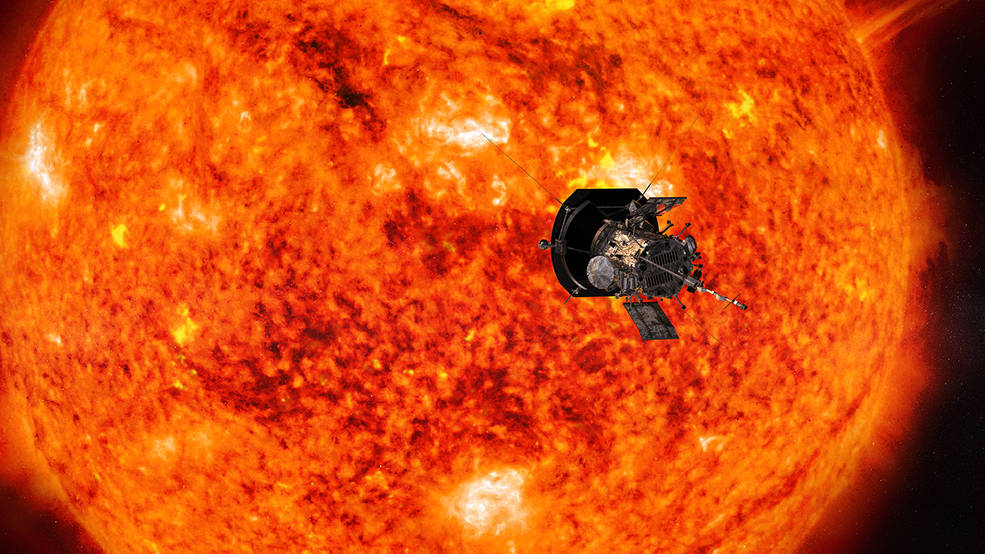In Just One Week, NASA Will Launch a Spacecraft to 'Touch the Sun'

NASA is just a week away from launching its next science mission, a spacecraft called the Parker Solar Probe that will eventually "touch the sun."
If all goes according to plan, the probe will take off aboard a United Launch Alliance Delta IV Heavy rocket in the early morning of Aug. 11 from Cape Canaveral Air Force Station in Florida. The 45-minute launch window opens at 3:45 a.m. EDT (0748 GMT). You can watch the launch live on Space.com, courtesy of NASA TV.
To successfully reach the sun, the Parker Solar Probe needs to leave Earth incredibly quickly — hence the massive rocket, which is second in launch power only to SpaceX's brand new Falcon Heavy rocket. [NASA Mission to 'Touch the Sun' Due to Launch in Early August]
Once the spacecraft waves goodbye to Earth, it will loop around Venus in a maneuver called a gravity assist that will slow down the spacecraft and carefully control its approach to our star. The gravity assist is scheduled for Oct. 2 and will put the probe on track to reach its first point of close approach to the sun on Nov. 5. That flyby will kick off 24 orbits, performed over seven years, that will gradually pull the spacecraft closer and closer to our star.
On its final close approach, in 2025, the Parker Solar Probe will get within 4 million miles (6 million kilometers) of the sun's surface — so close that it will actually fly through the star's incredibly hot atmosphere, called the corona, NASA officials have said.
The spacecraft will survive the heat for so many years because of the powerful shield engineers have designed. This shield doesn't weigh down the spacecraft but keeps the instruments aboard at a safe 85 degrees Fahrenheit (30 degrees Celsius).
During the spacecraft's orbits, those instruments will be working to solve three major scientific mysteries about our local star: why its atmosphere becomes hotter farther away from the surface of the sun, how the solar wind of charged particles streaming out into space is born, and what causes the gigantic outbursts scientists call coronal mass ejections.
Breaking space news, the latest updates on rocket launches, skywatching events and more!
The answers could be crucial to scientists' understanding of how stars beyond our solar system work. And closer to home, the probe's work should also help scientists understand and predict the hazards of living near a star. Solar activity can interfere with communications and navigation satellites around Earth — and even knock out power grids on the planet's surface.
The Aug. 11 launch date comes after a couple of delays, including one due to additional software testing and one caused by a small piece of foam found inside the rocket's nose cone. The spacecraft's original launch window opened on July 31 and was due to close on Aug. 19, but NASA was able to extend the launch window to Aug. 23, according to a NASA tweet from Aug. 2.
Email Meghan Bartels at mbartels@space.com or follow her @meghanbartels. Follow us @Spacedotcom, Facebook and Google+. Original article on Space.com.

Meghan is a senior writer at Space.com and has more than five years' experience as a science journalist based in New York City. She joined Space.com in July 2018, with previous writing published in outlets including Newsweek and Audubon. Meghan earned an MA in science journalism from New York University and a BA in classics from Georgetown University, and in her free time she enjoys reading and visiting museums. Follow her on Twitter at @meghanbartels.
